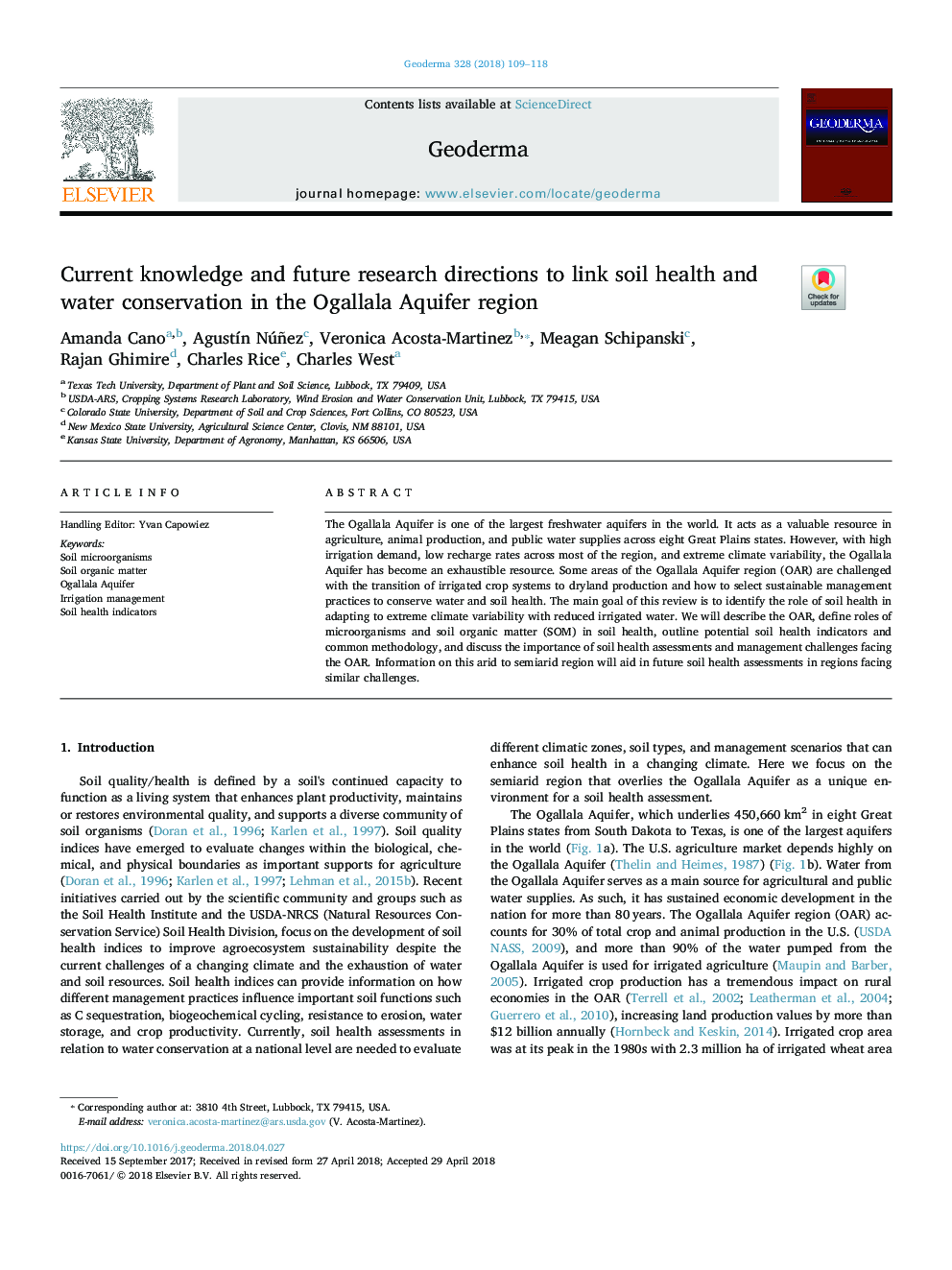| Article ID | Journal | Published Year | Pages | File Type |
|---|---|---|---|---|
| 8893949 | Geoderma | 2018 | 10 Pages |
Abstract
The Ogallala Aquifer is one of the largest freshwater aquifers in the world. It acts as a valuable resource in agriculture, animal production, and public water supplies across eight Great Plains states. However, with high irrigation demand, low recharge rates across most of the region, and extreme climate variability, the Ogallala Aquifer has become an exhaustible resource. Some areas of the Ogallala Aquifer region (OAR) are challenged with the transition of irrigated crop systems to dryland production and how to select sustainable management practices to conserve water and soil health. The main goal of this review is to identify the role of soil health in adapting to extreme climate variability with reduced irrigated water. We will describe the OAR, define roles of microorganisms and soil organic matter (SOM) in soil health, outline potential soil health indicators and common methodology, and discuss the importance of soil health assessments and management challenges facing the OAR. Information on this arid to semiarid region will aid in future soil health assessments in regions facing similar challenges.
Related Topics
Physical Sciences and Engineering
Earth and Planetary Sciences
Earth-Surface Processes
Authors
Amanda Cano, AgustÃn Núñez, Veronica Acosta-Martinez, Meagan Schipanski, Rajan Ghimire, Charles Rice, Charles West,
